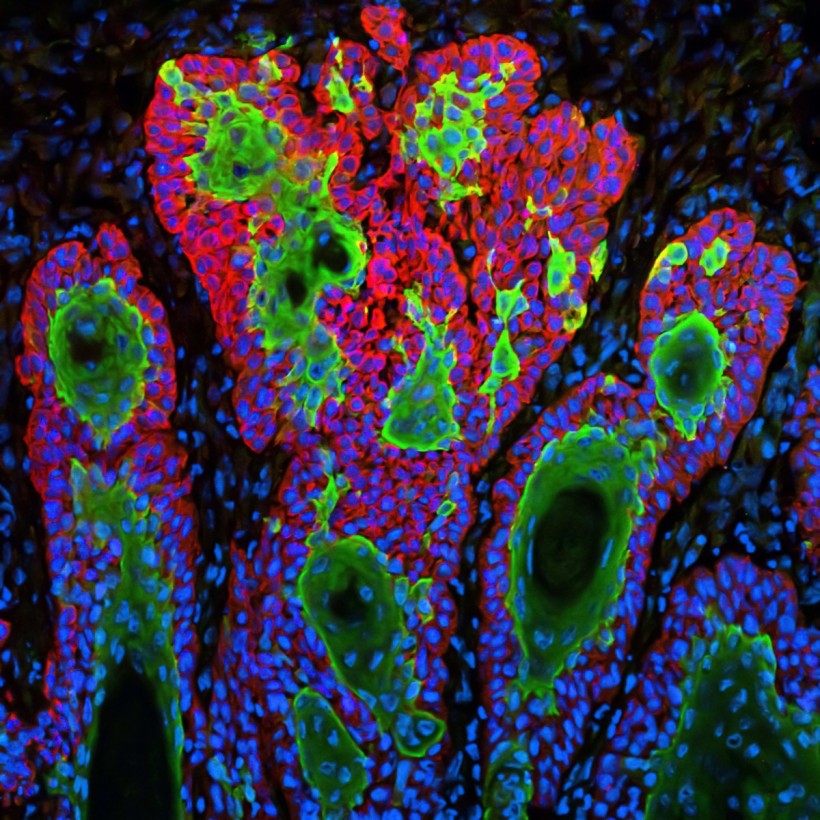University of Waterloo researchers have discovered a novel way for scheduling radiation therapy that might be up to 22% more successful than current conventional radiation treatment regimens in killing cancer cells. The technique considers the fact that tumors are made up of numerous types of cells, including cancer stem cells, which are highly resistant to radiation, SciTech Daily reported.
Previous studies have optimized radiation therapy schedules assuming that all cancer cells were the same, but this new strategy allows for tumor heterogeneity and may lead to improved patient results.

Squamous cell carcinoma, the second most common form of skin cancer
Using Math To Kill Cancer Cells
The majority of the numerous mathematical studies that investigated how to improve the timing of radiation treatment for optimum cancer efficacy assumes "intratumoral homogeneity," or that all cancer cells are the same.
Scientists have recently discovered that tumors are made up of several distinct types of cells, including cancer stem cells, which are more radiation resistant than other types of cells.
Lead author and Ph.D. candidate Cameron Meaney at Waterloo's Applied Mathematics said that the difficulty with any cancer computation is that accurate figures are extremely difficult to obtain since things change from cancer type to cancer type, patient to patient, and even inside the tumor.
According to Science Daily, the new algorithm can generalize the differences in radiation resistance between stem cells and non-stem cells, allowing clinicians to forecast how a tumor will respond to therapy before collecting specific data on a person's cancer.
Meaney noted that the model has limitations since tumors involve significantly more than two types of cells. However, it does give clinical researchers a stronger starting place for therapy studies. She said that the results of the algorithm will significantly shed light on the heterogeneity in tumors for planning treatment.
The researchers expect to see their algorithm used in clinical investigations next, hoping that their proposed therapeutic plan surpasses conventional scheduling approaches in a clinical trial.
They published the findings of their study, titled "Temporal Optimization of Radiation Therapy To Heterogeneous Tumor Populations and Cancer Stem Cells," in the Journal of Mathematical Biology.
READ ALSO: Experimental Cancer Treatment That Uses CRISPR Gene-Editing Put Young Girl Into Remission
Mathematical Modeling Inspires Nanomedicine
In 2018, Waterloo researchers wrote in a press release that math can inspire the design of nanomedicine. They said that they used mathematical modeling and integrated it with experimental data to understand the chemo-resistant characteristics of cancer cells that allowed them to survive treatment over time.
They have validated the predictions from their mathematical model using animal models of aggressive breast cancer and found that to overcome resistance and relapse, a deadly combination of medications in a single nanoparticle must be administered to the same cell.
These new articles emphasize the necessity of collaboration between mathematics and cancer biologists. They demonstrate that arithmetic may be used to better understand cancer and has a significant influence on treatment results.
Mathematical and computational tactics use computational models to evaluate potential medication combination strategies as well as other hypotheses in a painless, rapid, and cost-effective manner.
RELATED ARTICLE: Cancer Treatment: Nanomedicines Improve Drug Delivery, Reduce Toxic Effects of Chemotherapy
Check out more news and information on Cancer in Science Times.




![Earth's Quasi-Moon Kamo‘oalewa Could Originate From Lunar Surface Not Asteroid Belt [Study]](https://1721181113.rsc.cdn77.org/data/thumbs/full/53275/89/56/50/40/earths-quasi-moon-kamo-oalewa-could-originate-from-lunar-surface-not-asteroid-belt-study.png)









